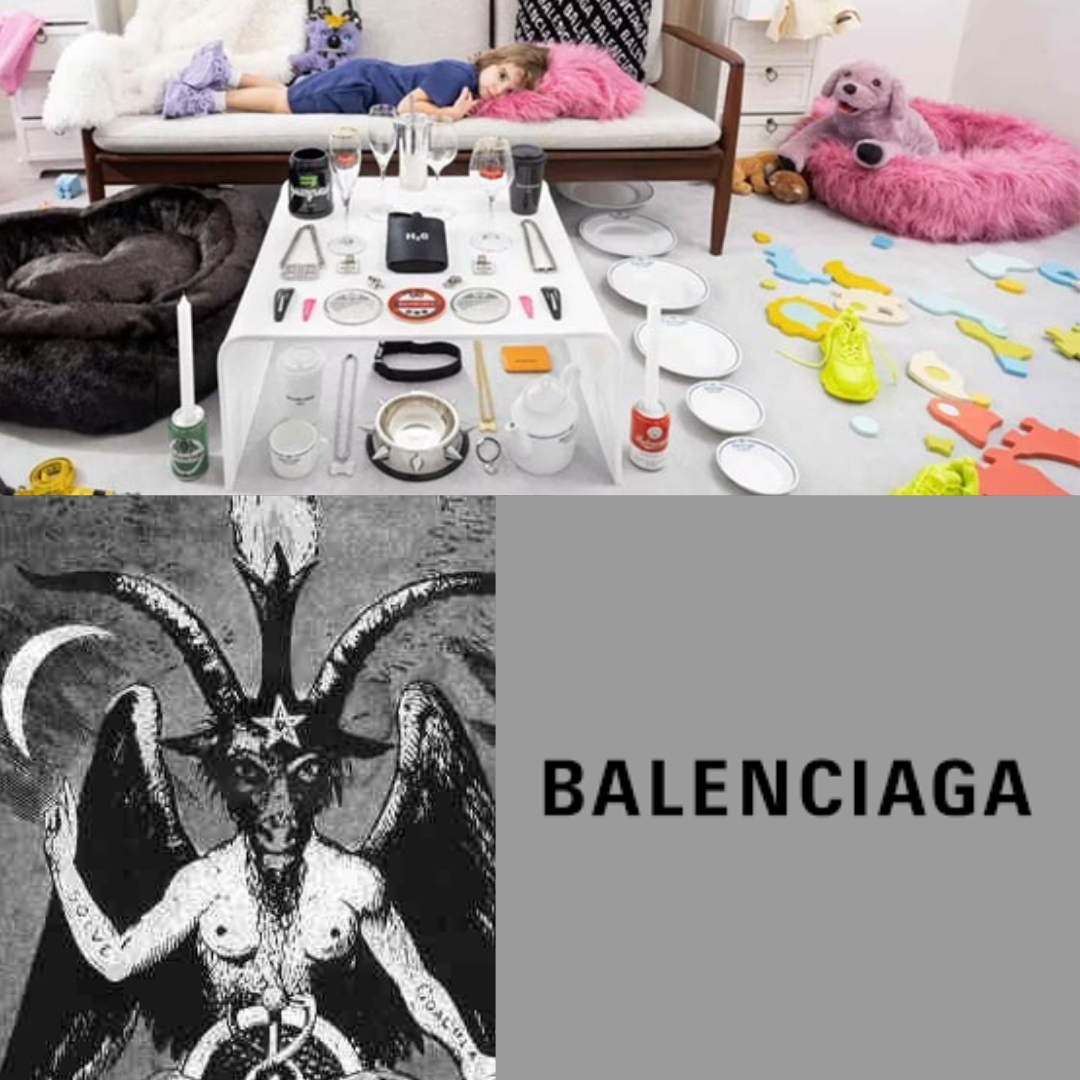Balenciaga, a luxury fashion house known for its high-end clothing and accessories, found itself embroiled in controversy involving accusations of promoting satanic imagery. The controversy began when the brand released a series of advertisements that featured unsettling and provocative imagery, leading to public outrage and widespread condemnation. The campaign in question showcased children holding teddy bears dressed in bondage gear, which many viewers found disturbing and inappropriate. Critics argued that the images were not only unsuitable for a luxury brand but also suggested a deeper, more sinister meaning. The backlash intensified as more people scrutinized the advertisements, claiming that they contained subliminal satanic symbols and themes.
The primary catalyst for the outrage was the perceived inappropriate and potentially harmful content involving children. The images struck a nerve with many parents and advocacy groups who felt that the use of children in such a context was exploitative and in poor taste. This led to a wave of negative reactions on social media, with users accusing Balenciaga of normalizing inappropriate and potentially harmful behavior. The controversy quickly gained traction, with numerous articles and opinion pieces condemning the brand for its lack of sensitivity and poor judgment.
In addition to the disturbing use of children, other elements in the advertisements were also scrutinized. Some critics pointed out that certain objects in the background appeared to reference occult and satanic symbolism. For instance, one image featured a child standing in front of a wall covered with caution tape that read “BALENCIAGA,” which some interpreted as a play on the word “Baal,” a deity often associated with occult practices. Another image showed a handbag on a desk with papers that, upon closer inspection, included references to a Supreme Court case related to child exploitation laws. This discovery fueled further outrage, as many saw it as a deliberate and disturbing choice by the brand.
The controversy surrounding Balenciaga and Satan gained momentum as prominent figures and celebrities joined the conversation. Some well-known personalities, including influencers and public figures, expressed their disapproval and disappointment with the brand. This amplified the issue, bringing it to the attention of a broader audience and leading to calls for boycotts and public apologies. The involvement of high-profile individuals added credibility to the accusations and increased the pressure on Balenciaga to respond to the growing public outcry.
In response to the backlash, Balenciaga issued multiple statements addressing the controversy. The brand apologized for any offense caused by the advertisements and acknowledged the need for greater sensitivity and oversight in their marketing campaigns. They emphasized that the images were intended to be edgy and provocative but had been misinterpreted by some viewers. Balenciaga also promised to take immediate action to review and revise their advertising practices to prevent similar incidents in the future.
Despite the brand’s efforts to mitigate the damage, the controversy had a significant impact on Balenciaga’s reputation. Many consumers felt betrayed by a brand they once admired for its innovative and avant-garde approach to fashion. The incident raised important questions about the responsibilities of luxury brands in their marketing and the potential consequences of pushing creative boundaries too far. It also highlighted the power of social media in holding brands accountable and influencing public opinion.
The controversy also sparked a broader discussion about the use of provocative imagery in advertising and the ethical considerations involved. Some argued that the backlash against Balenciaga was a reflection of society’s growing sensitivity to issues related to children and exploitation. Others saw it as a case of overreaction and misinterpretation, suggesting that the brand’s intentions had been misunderstood. This debate underscored the complexities of navigating the fine line between artistic expression and social responsibility in the world of fashion.
In the aftermath of the controversy, Balenciaga faced both immediate and long-term challenges. The brand had to work hard to rebuild its image and regain the trust of its customers. This involved not only addressing the specific concerns raised by the controversy but also demonstrating a commitment to ethical and responsible marketing practices. Balenciaga took steps to increase transparency and accountability in their creative processes, including implementing stricter guidelines for their advertising campaigns and involving external experts to review content before its release.
The incident also served as a cautionary tale for other luxury brands, highlighting the potential risks of controversial and provocative marketing strategies. It underscored the importance of considering the broader social and cultural context in which advertisements are released and the potential impact on different audiences. The Balenciaga controversy became a case study in the fashion industry, prompting other brands to reevaluate their marketing practices and prioritize ethical considerations in their creative decisions.
In conclusion, the Balenciaga and Satan controversy was a significant event that brought to light important issues related to marketing ethics, social responsibility, and the power of public opinion. The incident highlighted the challenges that luxury brands face in balancing artistic expression with sensitivity to societal values and norms. While the controversy had a negative impact on Balenciaga’s reputation, it also provided an opportunity for the brand to reflect, learn, and improve its practices. Ultimately, the incident served as a reminder of the importance of ethical considerations in the world of fashion and the need for brands to be mindful of the messages they convey through their advertising.
Discover more from Heart to Head
Subscribe to get the latest posts sent to your email.
